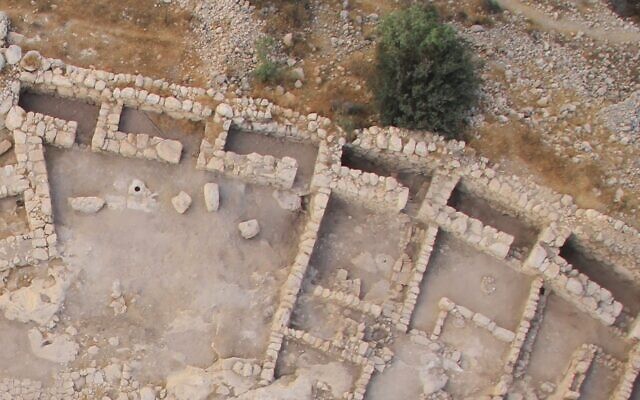Biblical Kingdom of Judah expanded earlier than originally thought, says Hebrew University archaeologist
New study claims southern expansion took place during the time of King David

In a new paper published in the Jerusalem Journal of Archaeology, Prof. Yosef Garfinkel argues that the Kingdom of Judah expanded into the hill country of Judah and the northern Shephelah territory southwest of Jerusalem during the time of King David in the 10th century B.C.
The Shephelah was a significant agricultural region during biblical times due to its fertile soil, gently rolling hills and sufficient rainfall. As seen in the Book of Ruth, the region was the breadbasket for the southern tribes and securing this rich agricultural land would have been a priority for the kingdom.
In his comprehensive study, Garfinkel looked at some of the earliest fortified sites in the Kingdom of Judah during the 10th century, including sites such as Khirbet Qeiyafa, Beth Shemesh, Tell en-Naṣbeh (Biblical Mizpah), Khirbet ed-Dawwara and Lachish.
Garfinkel’s study is not based on new archeological digs but a careful analysis of previous excavations by Saar Ganor of the Israel Antiquities Authority and Prof. Michael Hazel of Southern Adventist University in Tennessee.
“The evidence was known before, it is not a matter of new discoveries. What was needed was someone to come along and observe the complete picture that these findings portray. I am glad that I was able to fulfill that role,” Garfinkel said.
The findings show the expansion of the types of fortified cities mentioned in the Books of I and II Samuel, with casemate [double] walls, in an attempt to secure the valuable agricultural land from their nearest enemies at the time, the Philistines.
The cities are consistent with an urban capital in Jerusalem that sought to protect important trade routes and agricultural areas.
Khirbet ed-Dawwara protected the northeast border of Jerusalem, while Tell en-Naṣbeh (Biblical Mizpah), protected the northwest border. Beth Shemesh protected the western border and the route to the sea. Khirbet Qeiyafa protected the southwest border. Following the further southward expansion of Rehoboam, Lachish protected the southern border.

“The discovery of a barrier wall in this area effectively defines the boundaries of the urban core of the Kingdom of David, putting an end to the longstanding historical debate surrounding the existence of the Kingdom and its borders,” Garfinkel said.
The city of Khirbet Qeiyafa lies across the Ela Valley from the Philistine city of Gath. The valley was the site of David’s fight against the city’s most famous resident, Goliath.
After moving its capital to Jerusalem, the kingdom then spread further south to protect the important agricultural area from Philistine encroachment.
Garfinkel’s findings appear to support the biblical account of Judah during the time of David, through Rehoboam as a young, expanding kingdom.
“This finding provides tangible evidence on the ground, dated to the relevant period, supporting the biblical accounts of King Rehoboam's expansion and fortification as described in the Book of Chronicles. It is a rare instance where we can present empirical historical and archaeological evidence aligning with biblical narratives from the tenth century B.C,” according to the study.

The All Israel News Staff is a team of journalists in Israel.














